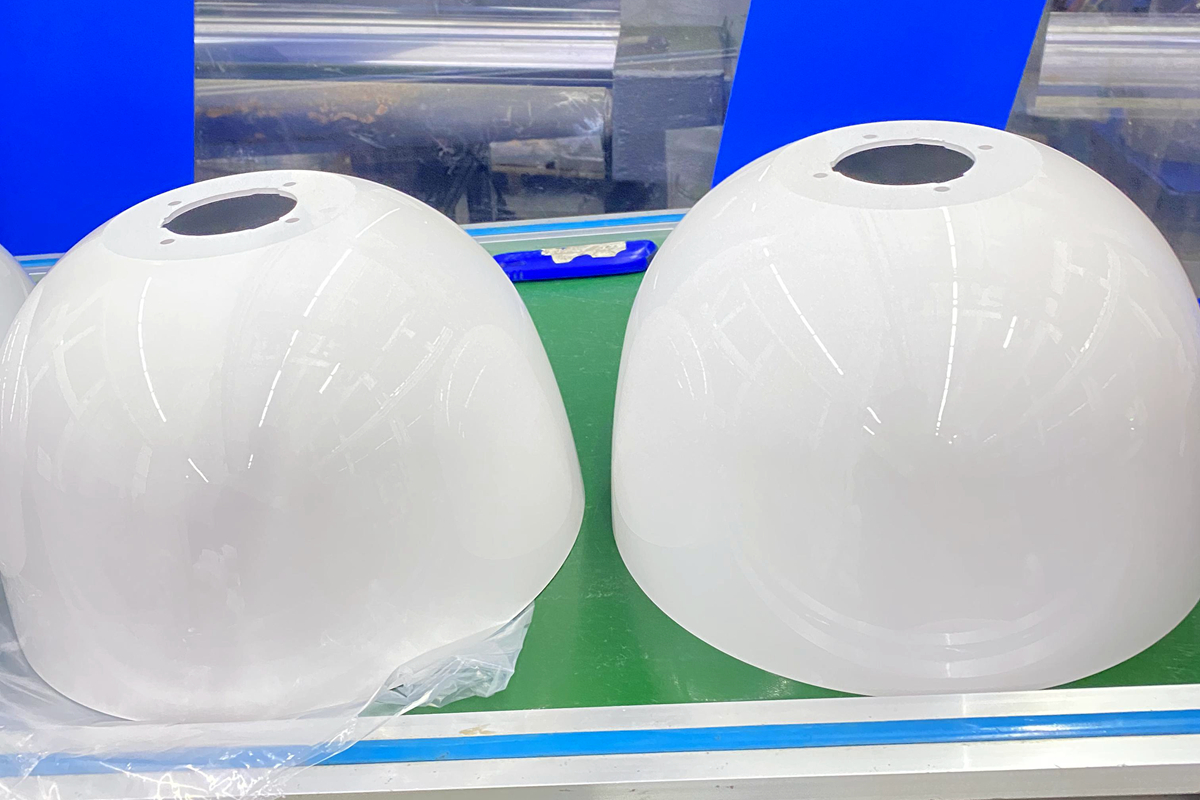UV Coating for CNC Machined Plastic Parts: Fast, Durable, and High-Quality Finishes
Introduction
UV coating is a cutting-edge finishing technique for CNC machined plastic parts, providing a rapid, durable, and aesthetically appealing surface treatment. This process involves applying a liquid coating that is then cured instantly using ultraviolet light, resulting in a robust, glossy, and protective layer. UV coatings are especially advantageous for enhancing color vibrancy, scratch resistance, and chemical resistance in plastics.
Commonly utilized in consumer electronics, automotive interiors, and medical devices, UV coatings ensure that CNC machined parts meet both functional and cosmetic specifications, making them ideal for applications requiring both durability and a high-quality finish.
UV Coating Technology: Enhancing Aesthetics and Durability
Scientific Principles & Industrial Standards
Definition: UV coating applies a liquid coating to plastic parts, which is then cured under ultraviolet light, forming a hard, protective finish. This technology is renowned for its quick curing times and superior finish quality.
Governing Standards:
ASTM D6551: Standard practice for accelerated weathering of pressure-sensitive tapes by ultraviolet light exposure.
ISO 4892-3: Plastics—Methods of exposure to laboratory light sources—Part 3: Fluorescent UV lamps.
ASTM D900: The helical coil test is the standard test method for bond strength of electrical insulating varnishes.
Process Function and Cases
Performance Dimension | Technical Parameters | Application Cases |
|---|---|---|
Enhanced Durability | - Scratch resistance improvement: 50-70% - UV resistance: prevents yellowing and degradation | Mobile phone cases, Automotive dashboards, Wearable devices |
Aesthetic Enhancement | - Gloss level: High-gloss finishes - Color enhancement: Intensifies depth and tone | Decorative trims, Display covers, High-end packaging |
Chemical and Water Resistance | - Resistance to household chemicals: Enhanced by 80% - Water repellency: Improved surface slickness | Kitchen appliances, Medical housings, Water-exposed components |
Speed and Efficiency | - Curing time: Seconds to minutes - High throughput: Suitable for large-scale production | Consumer electronics assemblies, Bulk manufacturing of promotional items |
UV Coating Process Classification
Technical Specification Matrix
UV Coating Type | Key Parameters & Metrics | Advantages | Limitations |
|---|---|---|---|
Standard UV Coating | - Cure time: 1–2 minutes - Application: Spray, dip, or flow methods | - Quick cure speeds - Excellent for clear and colored finishes | - Requires precise UV light intensity control |
High-Durability UV Coating | - Enhanced abrasion-resistant additives - Application thickness: 10–30 microns | - Superior hardness and scratch resistance - Ideal for high-touch surfaces | - More expensive than standard coatings |
Water-Based UV Coating | - Lower VOC content - Cure time: 1–3 minutes | - Environmentally friendly with reduced odor - Safer for indoor applications | - Generally less solvent resistance |
Anti-Microbial UV Coating | - Active anti-microbial agents - Effective against 99% of common bacteria | - Promotes cleanliness and hygiene - Suitable for medical and food contact applications | - Regular certification and testing required |
Selection Criteria & Optimization Guidelines
Standard UV Coating
Selection Criteria: Ideal for general consumer products needing fast turnaround and excellent aesthetic appeal.
Optimization Guidelines:
Ensure uniform coating application via automated spray systems.
Calibrate UV lamps regularly to maintain consistent curing conditions.
High-Durability UV Coating
Selection Criteria: Best for automotive and electronic components exposed to frequent handling or environmental stress.
Optimization Guidelines:
Apply a thicker coating layer for enhanced protection.
Use high-intensity UV light for rapid curing and strong bond formation.
Water-Based UV Coating
Selection Criteria: Recommended for indoor products requiring low VOC emissions and safer handling, such as in children’s toys or kitchenware.
Optimization Guidelines:
Maintain rigorous air extraction systems to avoid skinning before curing.
Adjust flow rates and curing times to achieve optimal surface properties.
Anti-Microbial UV Coating
Selection Criteria: Essential for parts used in medical, laboratory, or food preparation environments where sterility and cleanliness are paramount.
Optimization Guidelines:
Validate antimicrobial effectiveness regularly through standardized testing.
Ensure complete coverage during application to maintain protective properties.
Material-Coating Compatibility Chart
Substrate | Recommended UV Coating Type | Performance Gain | Industrial Validation Data |
|---|---|---|---|
High-Durability UV Coating | Increased scratch resistance | Used in automotive interiors with improved wear performance | |
Standard UV Coating | Enhanced color and gloss retention | Protective covers demonstrating prolonged clarity and brilliance | |
Water-Based UV Coating | Reduced environmental impact with effective protection | Child-friendly toys meeting safety and durability standards | |
Anti-Microbial UV Coating | Bacterial growth prevention | Medical device components certified for hospital use | |
Standard UV Coating | Superior surface finish and UV stability | Display components with extended lifecycle in retail settings |
Comprehensive Process Control and Quality Assurance
Preparation and Quality Standards
Pre-Treatment: Parts are thoroughly cleaned and prepped to ensure adhesion and smooth finish.
Process Control: UV intensity, coating viscosity, and cure times are closely monitored to guarantee uniform coating quality.
Post-Treatment: Coated items are inspected for uniformity, adherence, and performance characteristics.
Expert Insights and Common Inquiries
How does UV coating enhance the longevity and appearance of CNC machined plastics?
Can UV coated plastics withstand outdoor environmental conditions?
What are the health and safety considerations when applying UV coatings?
How do different substrates affect the choice of UV coating?
What are the cost benefits of implementing UV coatings in mass production?

